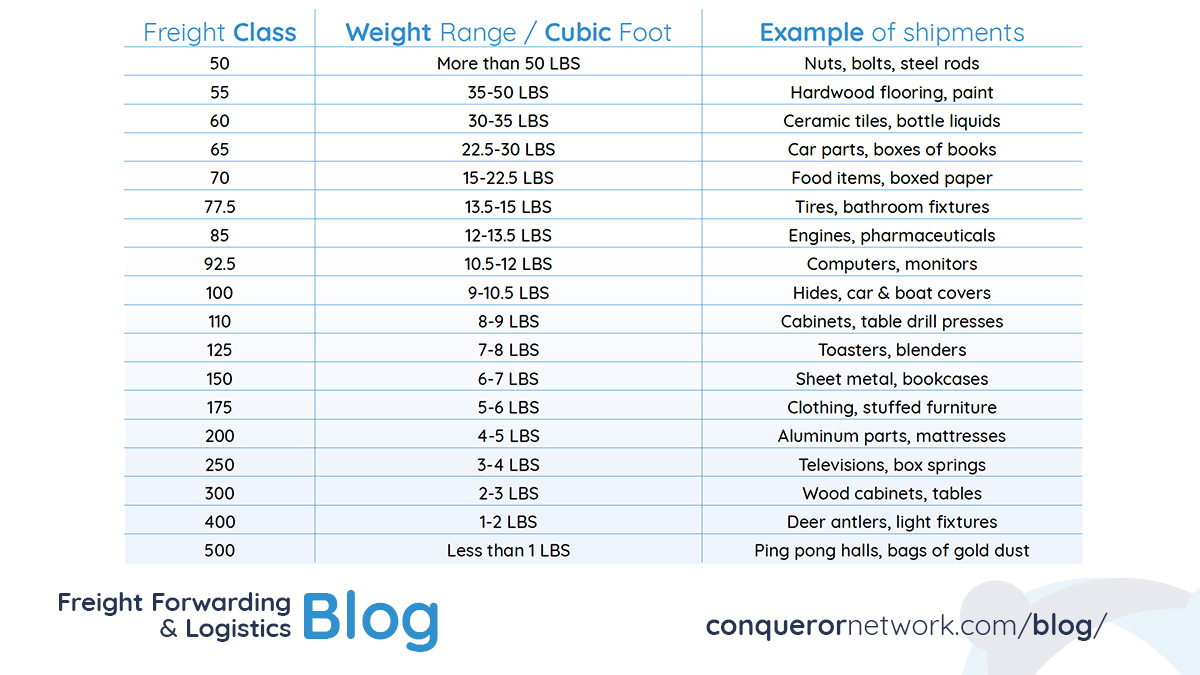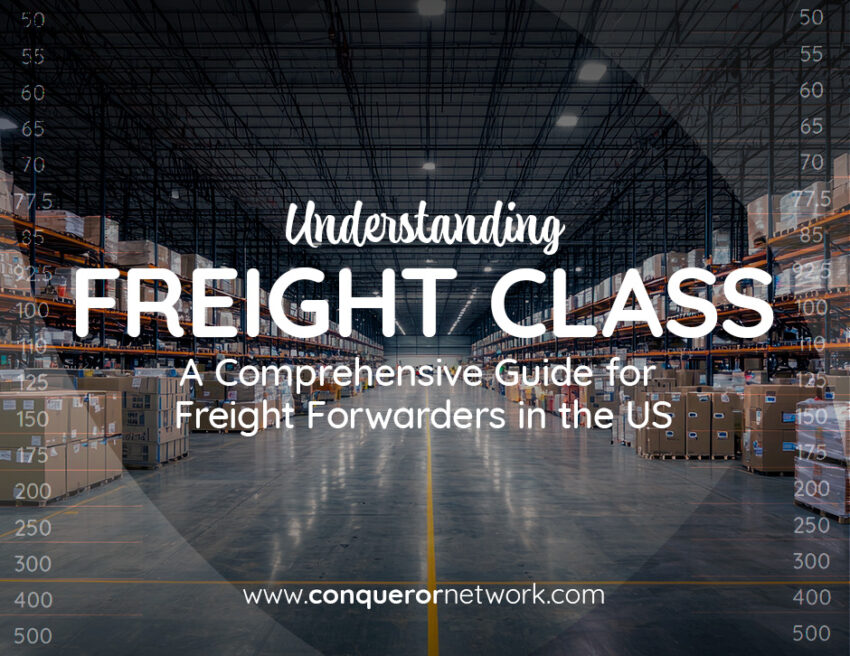Freight forwarding is a complex industry where precision, efficiency, and cost-effectiveness are key. One crucial factor that determines shipping rates and logistics planning is freight class. Whether you’re moving domestic LTL (Less-Than-Truckload) shipments or handling cross-border cargo, understanding freight classification is essential for accurate pricing, compliance, and smooth operations. In this guide, we will break down what freight class is, how it impacts shipping costs, and why it’s critical for freight forwarders in USA to classify shipments correctly.
What Is Freight Class?
Freight class is a standardized system used in the United States and beyond to categorize shipments based on specific characteristics. The National Motor Freight Traffic Association (NMFTA) developed the National Motor Freight Classification (NMFC) system, which assigns a freight class to commodities based on four primary factors:
-
Density – The space a shipment occupies relative to its weight
-
Stowability – How easily the cargo can be loaded and transported
-
Handling – The level of difficulty in moving and storing the freight
-
Liability – The risk of damage, theft, or liability concerns
Each commodity is assigned a class number between 50 and 500, with lower classes indicating denser, easier-to-transport freight and higher classes representing lighter, more fragile, or more difficult-to-handle shipments.
For example:
-
Class 50: Heavy, durable, stackable items such as bricks or steel
-
Class 500: Light, bulky, fragile items such as ping pong balls or insulation materials

Why Does Freight Class Matter for freight forwarders in USA?
Freight class plays a significant role in shipping costs and logistics efficiency. Here’s why it matters to freight forwarders:
1. Pricing and Cost Control
Freight class directly impacts LTL freight rates. A lower class means a lower shipping cost per hundredweight (CWT), while a higher class increases the cost. Forwarders must classify shipments accurately to avoid unexpected charges and optimize pricing for clients.
2. Compliance and Avoiding Re-classifications
Incorrect classification can lead to carrier re-classifications, resulting in costly adjustments, penalties, and delays. Freight forwarders who misclassify shipments risk disputes with carriers and additional charges passed on to clients.
3. Efficient Space Utilization
By understanding freight density and stowability, forwarders can maximize trailer space, ensuring optimal load planning and cost efficiency for LTL and FTL (Full-Truckload) shipments.
4. Risk Management and Liability Considerations
Certain freight classes come with higher liability due to fragility or theft risks. By properly classifying goods, forwarders can ensure the right insurance coverage and handling requirements to minimize losses.
How to Determine Freight Class Accurately
Freight forwarders should take the following steps to determine freight class correctly:
Calculate Density
Density is a major factor in classification. It’s calculated using the formula:
Density=Total Weight (lbs)Total Volume (cubic feet)\text{Density} = \frac{\text{Total Weight (lbs)}}{\text{Total Volume (cubic feet)}}
A higher-density item falls into a lower freight class, reducing shipping costs.
Consult the NMFC Code List
Every commodity has an NMFC code that corresponds to a specific freight class. Forwarders should refer to NMFTA’s database or consult carriers for the correct classification.
Consider Packaging and Handling
Proper packaging can sometimes lower a shipment’s freight class by improving stowability and reducing liability risks. Using stackable crates, reinforced pallets, or shrink wrapping can help optimize classification.
Common Freight Class Misconceptions
Many freight forwarders encounter issues due to misunderstandings about freight class. Here are some common misconceptions:
-
“All freight of the same type has the same class.” Not all items in the same category have the same freight class. For example, furniture made of solid wood has a different class than upholstered furniture due to differences in density and handling.
-
“Freight class doesn’t change.” Freight classification rules are updated periodically, and changes in packaging or shipment dimensions can alter the class.
-
“Higher freight class means higher priority.” Freight class does not determine priority. Priority is based on the shipping service level and the carrier’s operational constraints.
Freight Class and International Shipments
Although NMFC classifications are primarily used in the U.S., similar principles apply to international freight forwarding. Freight forwarders working with global shipments should be familiar with:
-
Harmonized System (HS) Codes – Used for customs classification and tariffs
-
Incoterms – Defining responsibilities in international shipping
-
Carrier-Specific Classification Systems – Some global carriers use their own freight class structures for LTL and air cargo
For freight forwarders operating across borders, working within an international freight network can help streamline classification and shipping processes.
The Future of Freight Classification
With the rise of AI, automation, and digital freight platforms, freight classification is evolving. Innovations such as smart scanning, automated dimensioning systems, and AI-based classification tools are reducing errors and improving accuracy.
Freight forwarders who adopt digital logistics solutions can enhance their freight classification process, minimize cost discrepancies, and improve overall efficiency.
Final Thoughts
Freight class is a critical factor in LTL shipping, impacting pricing, space utilization, and overall logistics planning. Freight forwarders must master freight classification to optimize shipping costs, ensure compliance, and prevent costly reclassifications.
By leveraging technology, staying updated on NMFC regulations, and collaborating with global freight networks, forwarders can streamline their classification processes and offer better service to clients.
For freight forwarders looking to enhance their expertise and expand their network, Globalia Logistics Network provides valuable connections and resources to navigate the complexities of freight shipping efficiently.


